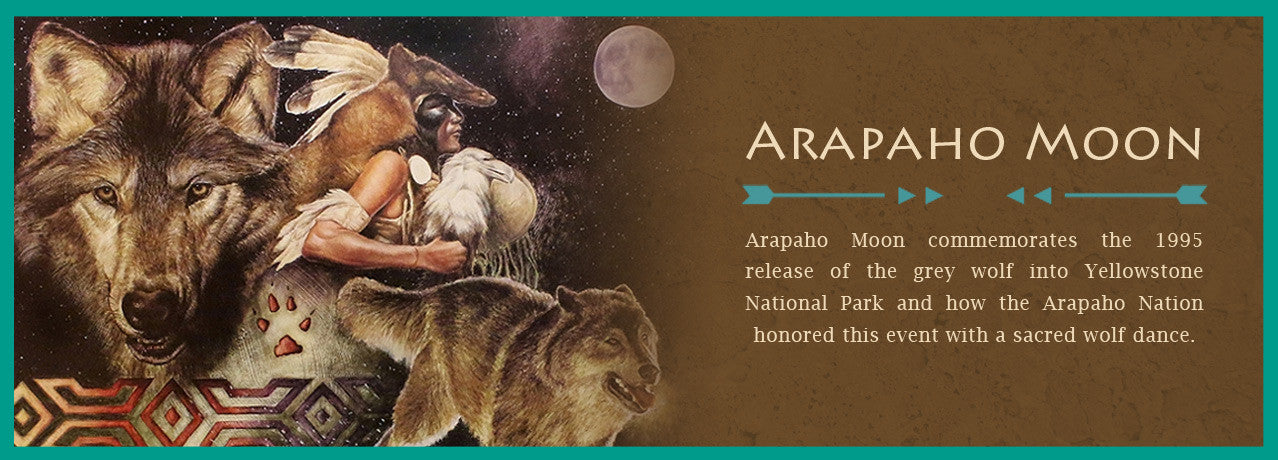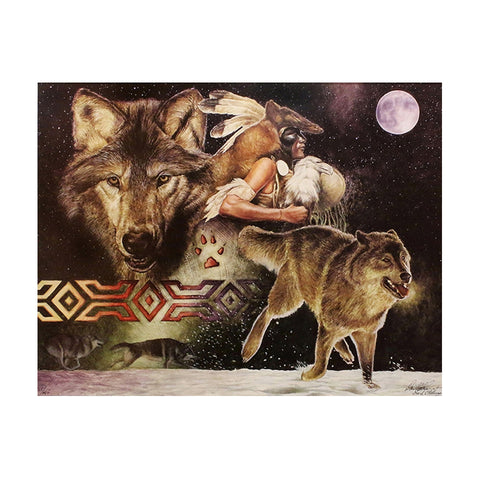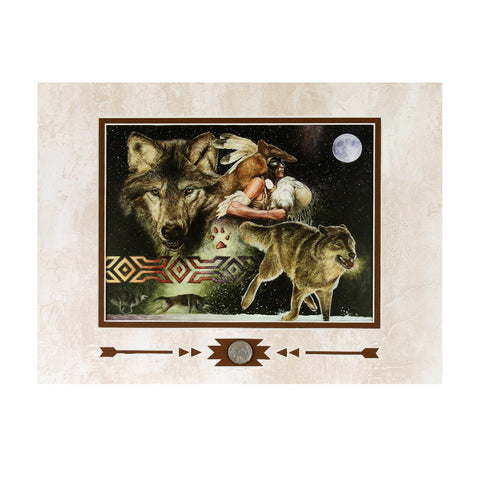
Arapaho Moon
Native American people have always identified with the ways of the wolf. Whether it was the Pawnee, who used "wolf signals: in communicating with each other, or the Blackfoot, who described harmonious life as "traveling the wolf trail," the wolf has always been known as a vital ally of Native people. In fact, both the Blackfoot and the Lakota believed that a gun used to shoot a wolf would never shoot straight again.
In 1995, the grey wolf was reintroduced back into Yellowstone National Park. This controversial event was met with both celebration and disapproval. To the Native people, this event was seen as a special kinship being restored. However, the townsfolk and ranchers saw these wolves as villains and predators to be feared and exterminated. With over two million wolves killed in the past few centuries, the US Fish and Wildlife Service under the Endangered Species Act, saw this effort as essential in trying to recover wolf populations.
With all that was taking place, the Northern Arapaho Wolf Society, whose Wind River reservation is just north of Yellowstone, saw this as an ideal time to perform their sacred Wolf Dance. Previously banned for over a century, this dance symbolized many things to the Arapaho. Since the end of the ice age, Arapaho's have considered the wolf its greatest teacher. According to their oral tradition, many of their methods of hunting, warfare, building and family cohesion derived from close observations of the wolf. The strongest of all parallels that unites the Arapaho and the wolf is their quest for survival. With the recent re-introduction of the grey wolf back into Yellowstone, a new season of hope and renewal has been ushered forth to Native people with the sure promise that their friend and ally has finally returned home.





